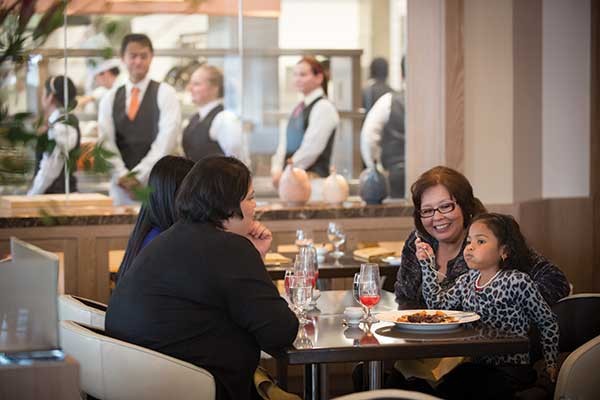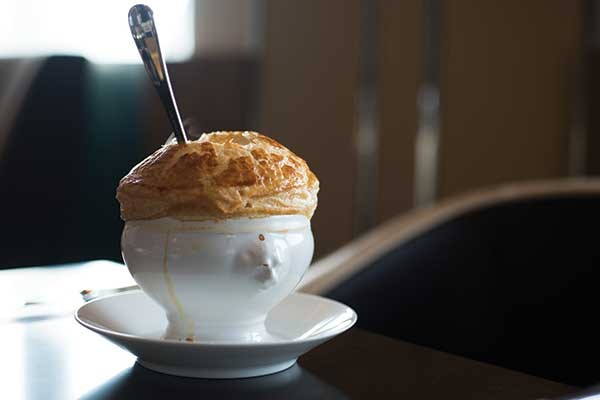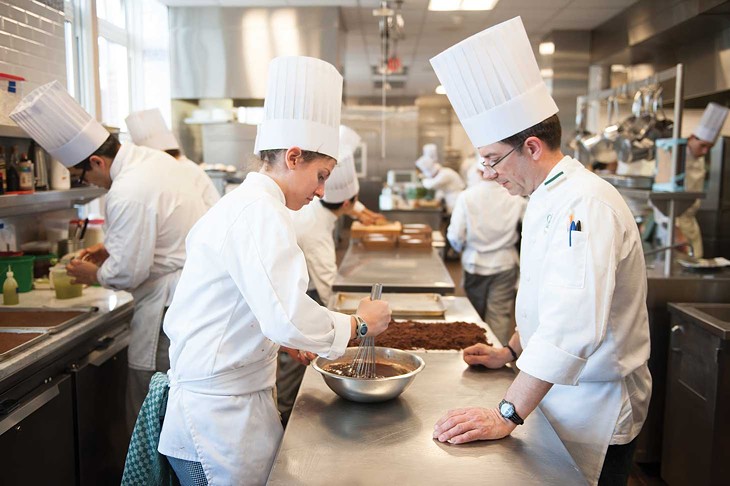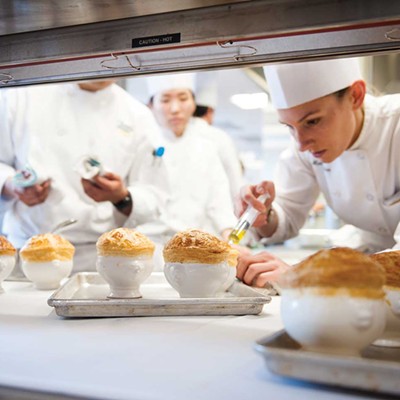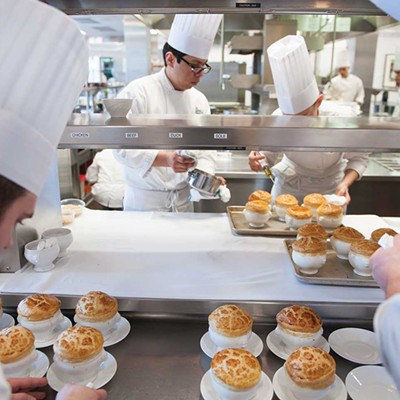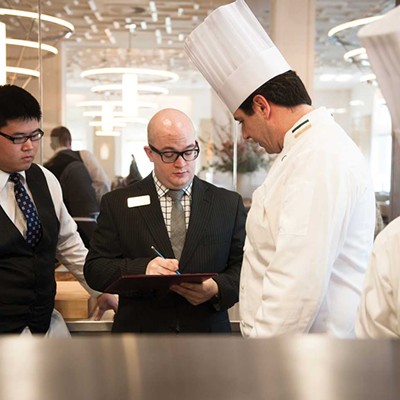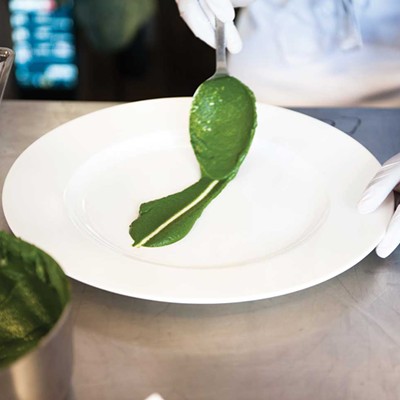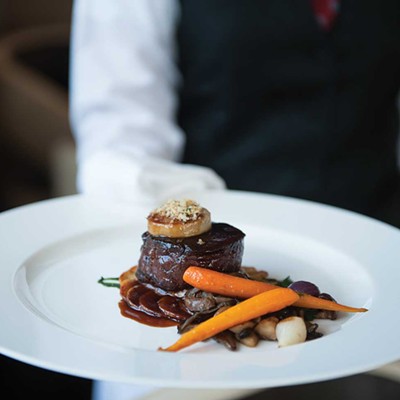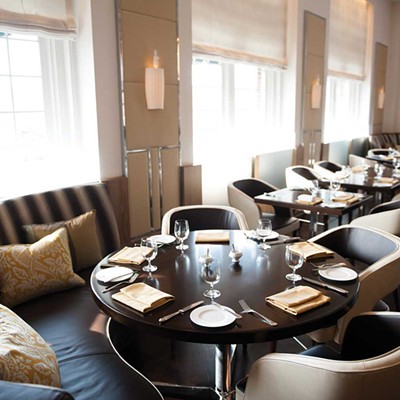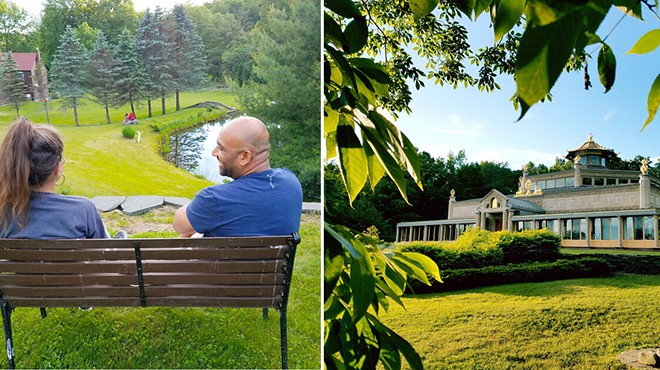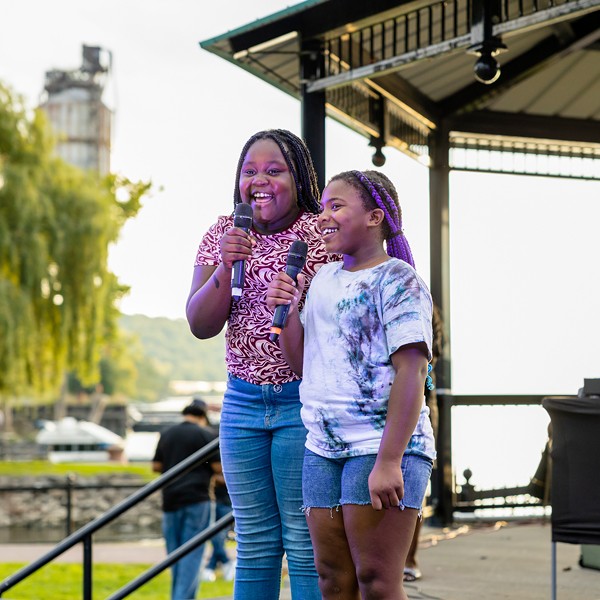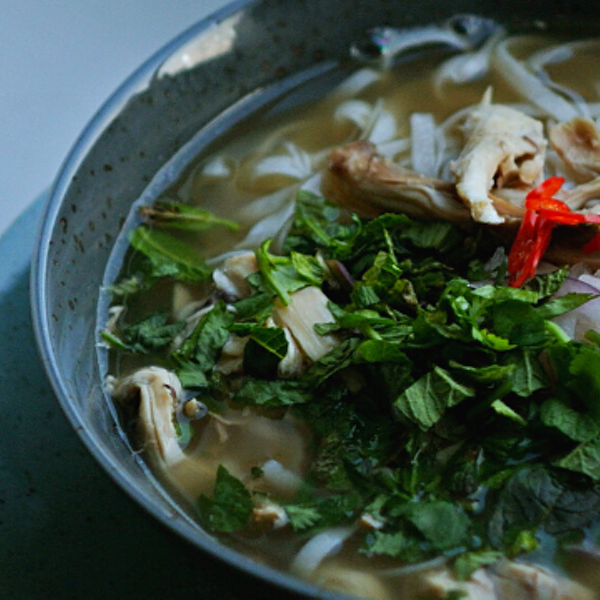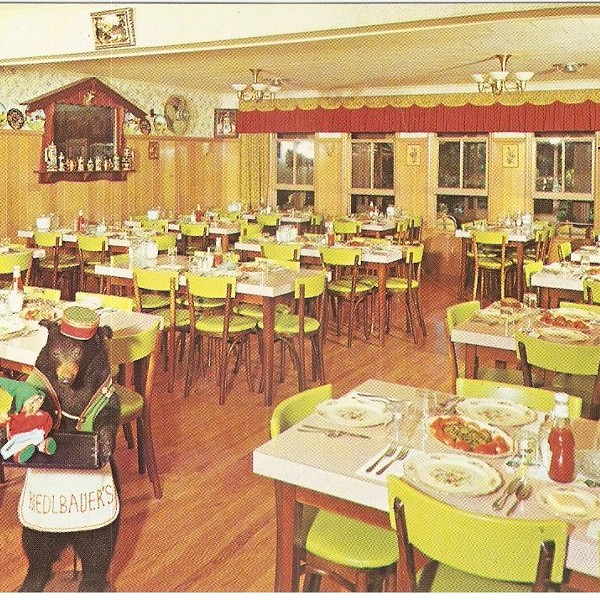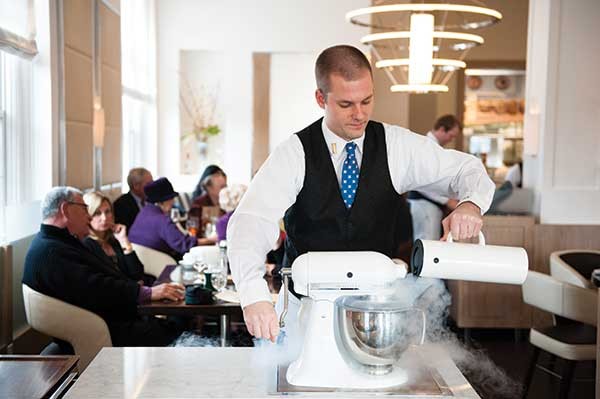
A pair of perfectly pink lamb chops on a sunchoke purée with a Madeira sauce come accompanied by a retro "epigram" of lamb: a hunk of shoulder or breast slow-cooked, pressed, and then breaded and fried, offering a crunchy and unctuous counterpoint to the tender chops. Snails, frog legs, frisée aux lardons: The menu will please traditionalists while more adventurous diners can enjoy the updated execution. The cloches for the snails (with little snails on top for handles) were custom-made by Bruce Ostwald, a ceramicist who teaches art and design at the school, and the walnut platters for the charcuterie plate are also made in-house. In back, like so many other high-end kitchens, there is new technology alongside the standard stoves and ovens. A sous vide station cooks vacuum-sealed food in a temperature-controlled water bath so results are consistent, a huge pressurized stock kettle makes 30 gallons in two hours, and the programmable ovens can steam, cook, heat, cool, reheat, and hold food at a precise temperature so it's ready when dinner service begins.
Because this is a teaching kitchen—except for the executive chef and kitchen manager, the whole crew rotates out every two weeks—the pressure is especially high to deliver a consistently flawless product, says Hengst. "Our biggest challenge is maintaining quality. How many four-star restaurants change their staff every 14 days?" Technology mitigates some of the risk, since meat cooked sous vide will always come out the right doneness, and the new ovens are astonishingly capable, but the chef-instructors and managers deserve most of the credit. The atmosphere in the kitchen is cheerful, focused, and surprisingly relaxed.
Restaurant as Learning Lab
The only cracks appear in the service. Besides working in the kitchen and eating a meal at the restaurant, every student is required to work out front doing service as well. "We want them to experience every aspect of a four-star restaurant, so that they're prepared when they graduate," explains Hengst, which is an entirely noble and commendable curricular requirement. The difference between the back and the front of the house, though, is that a chef can monitor and even veto a dish before it heads out to the dining room (under the watchful gaze of Chef Bocuse's picture by the door) while a hapless server bungling a tableside beverage has no such safety net. There was a delay mixing the Manhattan because more whiskey had to be procured; the bottle on the cart was empty. A tremulous hand dropped a baton of toast meant for the charcuterie plate, and for one perilous moment it appeared that by chatting about how this was the fourth time she had made the nitro ice cream, our server had stopped turning the crank for too long, causing the whole bowl to freeze solid. Straining through an increasingly forced smile, she prevailed, and the result was delightful, in both tiny cone and tiny bowl, with a plate of little cookies and cakes alongside.
Where normally one would forgive these hiccups as glitches typical to any recently opened establishment, the constant turnover of the student staff means that this will likely be an ongoing issue. Having said that, though, nobody comes to eat at the CIA unaware that it is a school, and where the glass wall gives us a window into a cutting-edge teaching kitchen, the service offers a look at something we tend to notice only when it falters. And let's be honest: the food is what we're interested in, and it does not disappoint.
As dramatic as the changes to French cuisine have been over the last century, especially when seen from the inside, haute cuisine is still inherently conservative and slow to evolve: Bocuse helped overthrow the ossified pretentiousness of Escoffier almost 50 years ago, before the CIA's Escoffier room even opened. The recent rise to prominence of Asian and Spanish cuisine in particular has caused much soul-searching and innovation among French chefs as their status has diminished. The one thing that nobody disputes is the importance of technique, and "French-trained" is still, along with Japanese, the most prestigious qualification a cook can claim. In that light, the CIA's choice of Bocuse as namesake makes perfect sense: showing respect for tradition but adapting it to reflect modern tastes and sensibilities, all the while teaching the mastery of technique, which allows for infinite expression in any type of cooking.
The Bocuse Restaurant is open for lunch and dinner Tuesday through Saturday when classes are in session. Reservations are encouraged. (845) 471-6608; CIArestaurants.com







